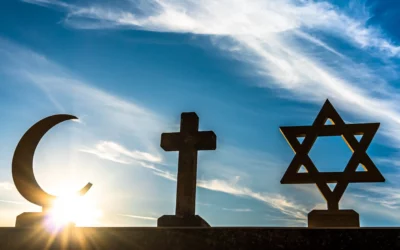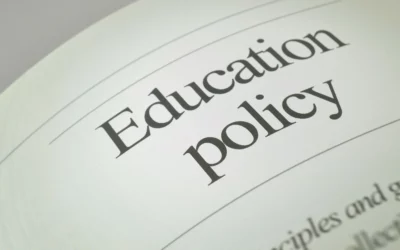
Written by Derek Monson
June 9, 2023
Originally published in Deseret News.
Growing up in Texas, Karith Foster was sometimes the only African American kid in her school classes. After graduating from college, she lived in New York City and worked in television while holding down a second job and pursuing a career in stand-up comedy. After talk-radio host Don Imus made controversial remarks about the Rutgers University women’s basketball team, Foster was offered the opportunity (and the burden) to co-host Imus’ show to help him “have a national conversation about racism in America.”
To Foster, the experience revealed examples of “diversity gone wrong” — approaches to diversity that create division rather than inclusion — and she committed herself to a better approach to diversity, equity and inclusion, or DEI. Now she uses storytelling and humor in an approach to DEI that “takes the division out of diversity by shifting the focus from what separates and divides us to what we have in common.”
Foster’s story is emblematic of what seems to be a growing social shift regarding DEI. After years of massive growth in DEI policies and programs in the public and private sectors, a clawback appears to be happening. Evidence pointing to this conclusion includes the pushback against Chick-fil-A for hiring a vice president of DEI, new state laws barring public funding for university DEI programs, declining business investment in DEI, and critical mainstream media coverage of certain DEI approaches.
As news accounts document, the expansion of DEI programs and policies in recent years has added to our divisions rather than bridging them — even making DEI feel like a threat to some. From a big-picture perspective, the sense of threat from DEI should come as no surprise because polarization can make anything that doesn’t align with our views feel like a threat.
But two distinct factors in how DEI happens on the ground play into the perceptions of threat: (1) the overlap between some DEI concepts and activist ideas, and (2) the agenda-driven hijacking of DEI. The solution to this problem is to reframe the pursuit of inclusion and belonging around universal and unifying American ideals rather than narrower, easily politicized ideas.
DEI concepts versus activist ideas
DEI programs often adopt concepts from outside the world of DEI. Two such examples are intersectionality (the idea that, for instance, a Black woman’s experience with prejudice will differ from that of a white woman or Black man) and viewing outcomes through the lens of racial power, both of which have roots in critical race theory. A heavy emphasis on group identity prominent in many DEI efforts also borrows from critical race theory, along with identity politics generally.
The problem this creates for DEI is found in a line from a book co-authored by one of the foremost scholars of critical race theory, Richard Delgado: “Critical race theory contains an activist dimension.”
There is nothing inherently wrong with political activism. Historically it has advanced racial progress tremendously. The activism of the Civil Rights Movement overturned segregation laws and resulted in the 14th Amendment’s equal protection clause in the U.S. Constitution. However, the Civil Rights Movement was forthright about its use of activism in its goals and methods.
DEI, on the other hand, is rarely held up as activism. It is generally described as a path to inclusion in the workplace and the classroom. So when DEI programs adopt ideas that are also used for activist purposes, questions of authenticity naturally arise.
When labeling and dividing people by race or gender are the means of promoting inclusion, for example, the natural result is distrust — especially when questions or concerns about such means are met with challenges about the questioner’s comfort with the racial power status quo. A natural result of inconsistency in DEI programs is to wonder if authentic inclusion — inclusion for everyone — is not really the main goal. And that leads to concerns about the possibility of DEI being a threat to cherished values, such as merit, upon which many people of all races and genders have built their well-being.
In The New York Times, Business for America founder and CEO Sarah Bonk recently said that “the way they’ve rolled out DEI has exacerbated divides even while addressing valuable issues. … It has created some hostility, resentment.” Irshad Manji, the Muslim founder of a business that promotes “diversity without division,” noted that a big problem with DEI is an “almost offensive focus on group labels” that “almost compels people to stereotype each other.”
And Pamela Denise Long, a Black woman who runs a DEI business and defended university DEI programs in a recent debate at MIT, says that DEI “gets antiracism wrong when it teaches an oppressor/oppressed narrative based on skin color.”
In a polarized political environment, mixing ideas with activist connotations into DEI is a recipe for making people feel threatened.
The hijacking of DEI
Beyond the ideas in some DEI programs, the way some have claimed the DEI mantle for agenda-driven purposes further contributes to the problem.
While arguing against abolishing university DEI programs at the MIT debate, Foster candidly noted that “diversity has been hijacked — no question in my mind.” Long added that “DEI makes things worse when advocates attempt to shoehorn the ambitions of all people onto the back of the descendants of U.S. slaves and our legacy.”
DEI can be hijacked when its supporters add their own agendas under the DEI umbrella, taking the focus away from its foundations. It can also be politicized, which is its own unique form of hijacking.
Some DEI supporters, for example, politicize and weaponize it to attack their partisan opponents as supporters of racial prejudice. At the same time, some DEI opponents politicize and weaponize it in pursuit of their own partisan aims.
Left in the political ruins are those who see genuine value in some of the goals of DEI and those who have legitimate concerns about some of the means and ends of DEI. These considerations are worth raising and thoughtfully debating — a nearly impossible feat in a political world as polarized as ours.
In that world, the incentive to hijack DEI is easy to see. When polarization forms the political oxygen that people breathe, you can raise a lot of money and build a lot of political clout by painting opponents’ motivations with the brush of racial prejudice (or some other form of bigotry) or as a malicious agenda to undermine America.
But the hijacking of DEI ultimately destroys the possibility of inclusion. As Foster argues, “When DEI is done poorly — which, let’s be blatantly honest, it’s taken a left turn — it creates insurmountable barriers of fear, mistrust, vengeance and indifference.”
Fear, mistrust and vengeance. Instead of nurturing inclusion, these lamentable byproducts create fertile ground for feeling threatened by DEI.
A better way forward
As Foster notes, “Just as there are healthy and unhealthy ways to raise a child, there are healthy and toxic ways to conduct diversity, equity, inclusion and belonging efforts.” Long says that “what we really ought to do is urgently nuance how (DEI) programs function so that we ultimately achieve the aim of equality in our nation.”
The solution to the threat many Americans feel from DEI involves grounding our approach to bridging racial and gender divides in universal values and unifying ideas rather than divisive social theories and controversial political agendas. Whatever we call these programs, they ought to strive for compassion for our neighbors’ struggles, respect for the experience and dignity of other people, and the American vision of human equality.
We can promote diversity without creating the division that is leading some today to feel threatened. The more we share our stories in ways that create compassion and respect across differences of race and gender, the closer we will be to achieving Martin Luther King Jr.’s vision of moving America “up the highway of freedom toward the city of equality.”
More Insights
Read More
Looking at Supreme Court and religious freedom through the lens of the presidential campaign
Two constitutional issues highlight similarities and differences between the Biden and Trump administrations.
Education policy to consider during the 2024 election season
Here’s a look at what each presidential candidate is likely to focus on in education, given their track records and campaign platforms.
Ignoring the text of the Constitution is a mistake
A written Constitution is entirely superfluous if the document is simply meant to give the people what they want.


